Fort Ancient Earthworks & Nature Preserve, All photos by Matthew Allen, unless otherwise noted.
Built around 2,000 years ago by the Ancestors of many modern American Indian tribes, Fort Ancient is a nature lover’s paradise that offers miles of trails, earthen embankments and hidden cosmic connections.
Blast into the Past
Fort Ancient is the largest hilltop enclosure in North America, a fact that’s not lost on you as you explore the 126-acre plateau of the first Ohio State Park, established in 1891.
Sitting above the Little Miami River, much of the space is enclosed by earthen embankments that the Ancestors constructed from one basketful of earth at a time. Many of the embankments, which are as impossibly remarkable as any modern-day structure, reach heights of 23 feet.
But rather than feeling like a place of war, as the “fort” name may suggest, the space feels welcoming thanks to more than 67 gateways (or notches) breaking up the embankments. In fact, it was not a defensive fort at all, and American Indians and archaeologists today believe Fort Ancient more likely served as a community gathering place for ceremonies and more. The space more than likely hosted ancient American Indians from across the continent, as evidenced by finely crafted ceremonial objects made of materials from far away, such as silver from Canada or obsidian from Wyoming. At first, archaeologists thought it was just an example of trading between tribes.
Fort Ancient Earthworks & Nature Preserve
“But what they actually realized was somebody would bring gifts to the ceremonies to say, ‘Thank you for doing the ceremony. This is a gift from my part of the country,’” says Pam Hall, Fort Ancient program manager.
The interior of the earthworks, which has interconnected north, middle and south enclosures, also features several mounds, including some covered in limestone. And Hall points out that, interestingly, there’s evidence that many of the mounds and embankments were constructed on top of smaller mounds, meaning that the builders may have planned everything out.
“They’re laying it out like a blueprint first, and then they’re packing that in,” says Hall.
When seen in person, such ancient engineering expertise makes the mind wonder with fascination. One of the more special areas is Morehead Circle, a spot near Fort Ancient’s museum. The ceremonial space was likely a woodhenge, which were circular arrangements of wooden posts. There’s evidence of posts in the ground, spaced out several meters apart and in three concentric circles. The soil in the center was discovered to be tightly packed and reddish, leading archaeologists and historians to believe it was an area of intense and sacred activity.
“Here’s this fascinating center circle where all kinds of things that we don’t even know what all happened there — ceremonies to honor the seasons, the changing cycles of life. It’s amazing to me,” says Pam Hall, Fort Ancient program manager.
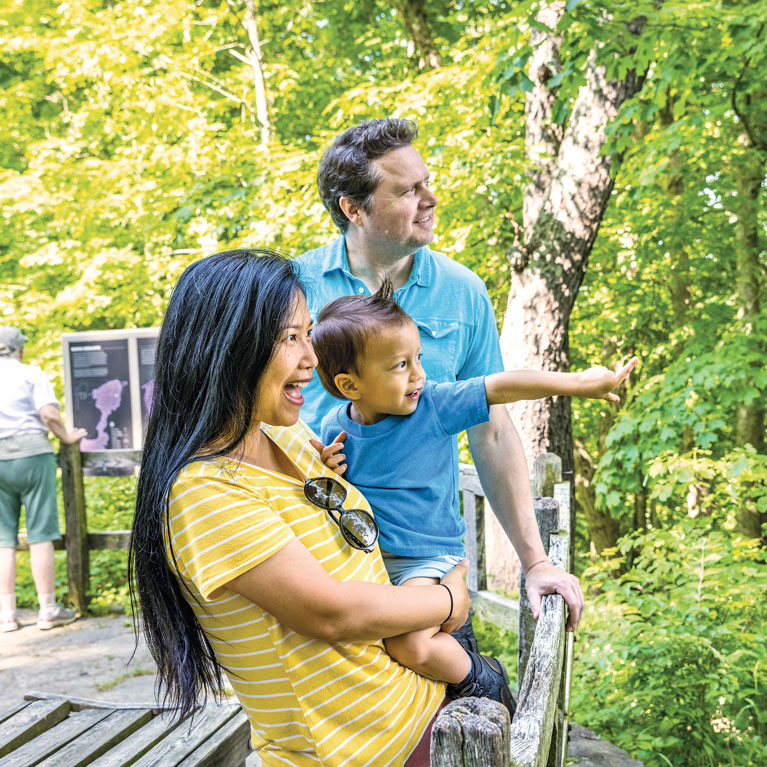
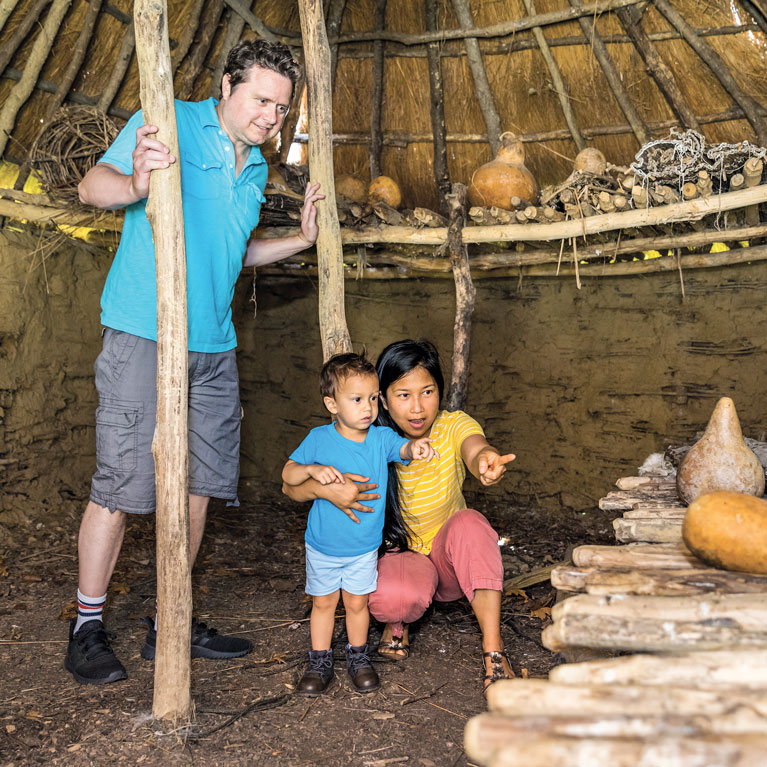

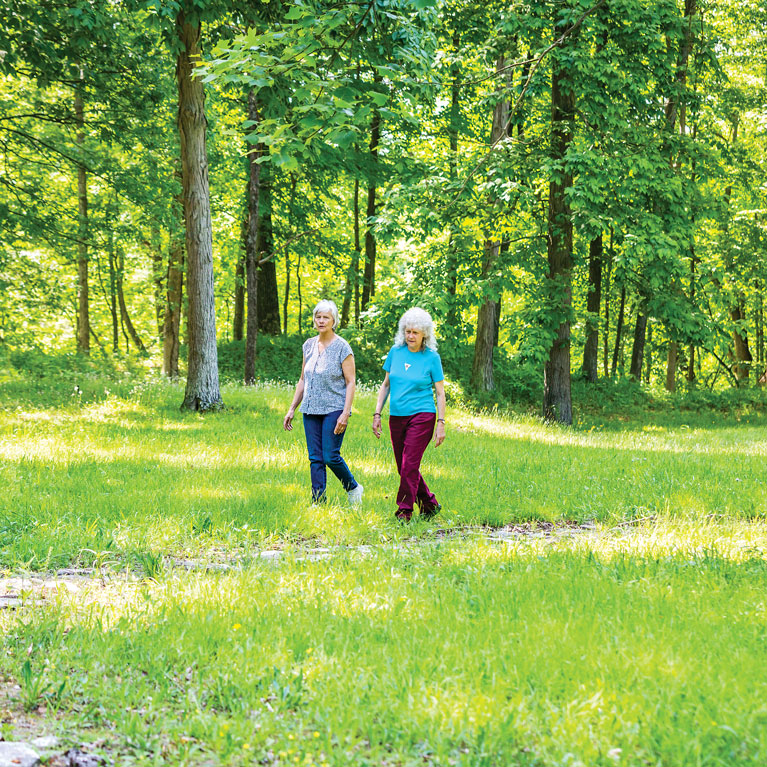
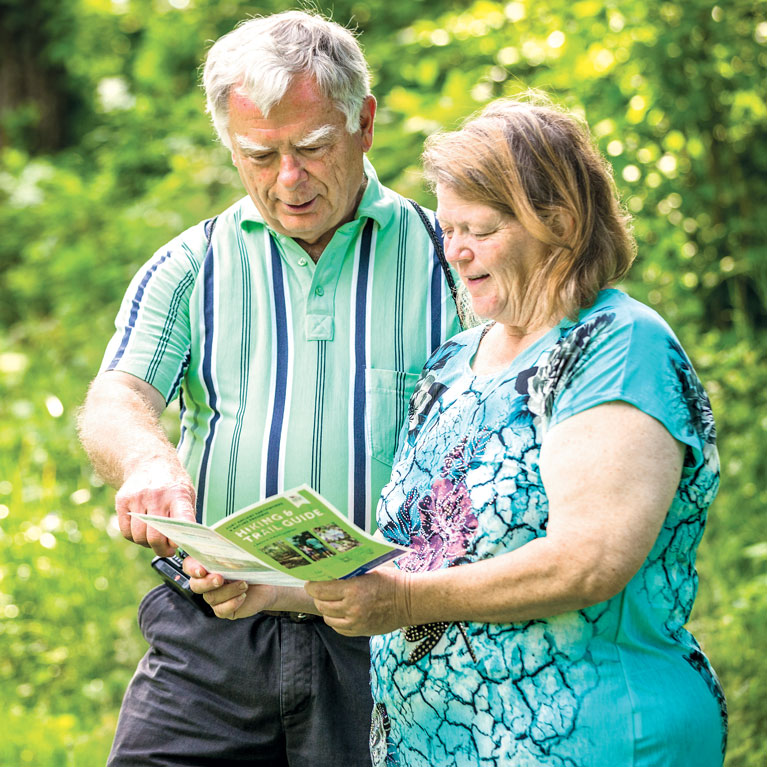
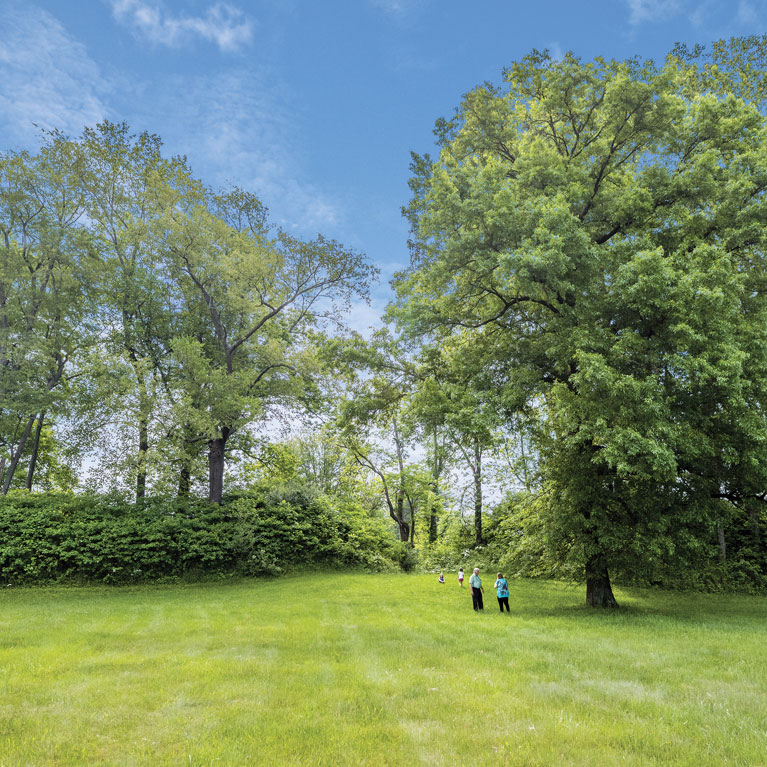
Point in Time
Further evidence of the earthwork builders’ engineering know-how can be seen in some of Fort Ancient’s astronomical alignments, including two (of the 67) embankment notches that help form a sort of calendar on the land. At sunrise on the winter solstice, a stone-capped mound and one of these notches line up to point to the exact spot where the sun will peak above the horizon.
There’s even evidence at Fort Ancient that these American Indian ancestors understood the 18.6-year lunar cycle. When seen in-person, it’s an astonishing lesson on what humans are capable of when they work with nature.
“Ancient peoples across the world lived with the cycles of nature,” Hall says. “Today, we recognize that Indigenous cultures often hold ancient knowledge about plants, animals, and the cosmos that science is just beginning to understand.”
Fort Ancient Earthworks & Nature Preserve
Take a Hike
That connection with nature is also apparent on Fort Ancient’s 2.5 miles of trails — after all, the space is also a nature preserve that’s home to birds, woodland animals and plants, flowers, herbs and more. A 1.5-mile trail leads to the north lookout, which provides an unbeatable view of the Little Miami River valley, acres and acres of trees and a distant peek at the Jeremiah Morrow Bridge that carries I-71 over a gorge.
“It’s very beautiful,” Pam Hall, Fort Ancient program manager, says of the lookout. A connecting trail takes you down 200-plus feet into the valley and to a bike path — but be prepared to tackle the steep return.
The wooded Mound Trail takes you by small, secluded mounds. Yet another half-mile trail near the museum takes you through a prairie to spot wildflowers and more. A trail leading to the southern lookout takes you near the place archaeologists suspect ancient visitors to Fort Ancient came up after disembarking from their boats on the Little Miami.
“You’ve got these big limestone pathways where they'd walk up from the river,” Hall says. “You see that from a distance. You park your canoe and then you can walk on up in.”
North Gate Twin Mounds, Ohio History Connection

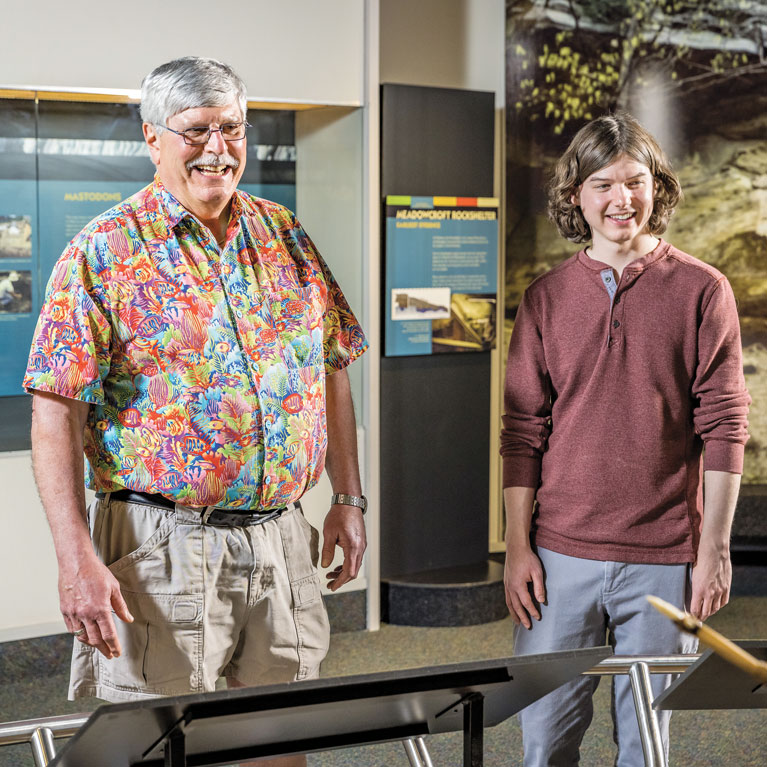
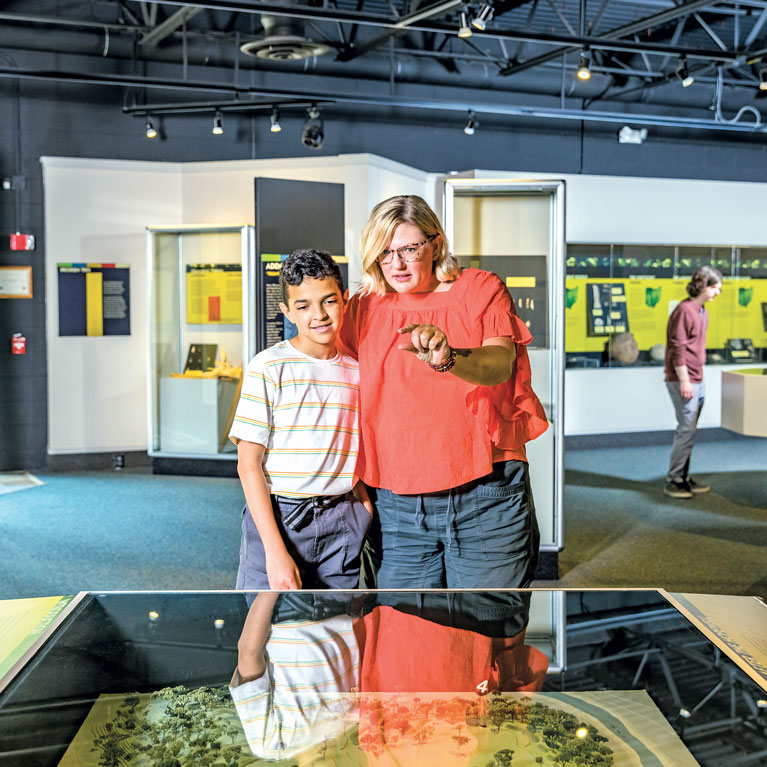
Go Deeper
If you’ve gotten your fill of the outdoors, or just want to learn more, head into Fort Ancient’s 9,000-sq.-ft. brick-and-stone museum.
The museum’s exhibits, complete with a mix of artifacts that are both real and replicas, are broken up into three major themes charting the history of American Indians in the land now called Ohio. The first section details the individuals’ trip across the Bering Strait and into what’s now Alaska, from about 13,000-10,000 years ago. Exhibits show how the hunter-gatherers worked together to stalk mastodons in order to survive.
“There’s all kinds of information of what the ancient landscape really looked like in the glacial periods,” Hall says.
The second section, called Tillers of Soil, shows how people’s relationships with plants changed over time. You learn that people began managing wild plants, and those plants changed over many generations to become the earliest domesticated crops more than three thousand years ago. These plants, including goosefoot, marsh elder, squash, and sunflower, are still around today. You’ll also discover how they learned to take clay from riverbeds and fashion clay pots. This section also includes a fascinating topographical map of the Fort Ancient site.
In section three, you’ll learn how the tribes settled down even more, growing what the Iroquois called the “The Three Sisters:” corn, beans and squash. One of this section’s coolest artifacts is an actual Chippewa canoe.
Wrap things up with a memento from the Fort Ancient gift shop, including pottery reproductions, books, jewelry, walking sticks and T-shirts. But keep an eye out as Fort Ancient freshens up their offerings with gifts that pay even more homage to Native American cultures. Hall says the museum is hoping to connect with more American Indian artists and businesses to sell their products.
Fort Ancient Earthworks & Nature Preserve
Keep Exploring
Add these nearby Ohio history sites to your itinerary.
Discover more about the life and experiences of the writer of the influential antislavery novel Uncle Tom’s Cabin by touring her home in Cincinnati.
If you’re up for more hiking, visit the site of one of the two largest conical mounds in eastern North America. Climb the steps of the 65-foot-tall mound for a stunning view of Miamisburg.
Learn more about African American history through exhibits that tell the story of African American women who fought in the Suffrage and Civil Rights Movements, and the evolution of the role of Black comic book characters and creators.
